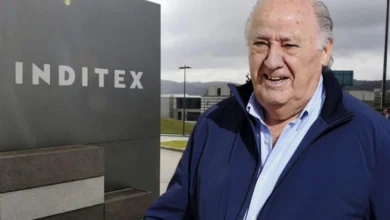Thomas Edison: From Trainboy to World-Changer – The Man Who Lit Up the World”
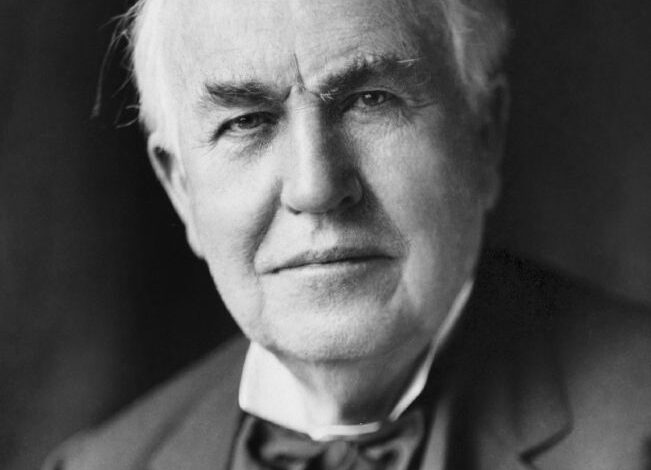
Discover the full life story of Thomas Edison, the self-taught genius who rose from humble beginnings and learning struggles to invent the electric light bulb and reshape modern life forever.
Thomas Edison: The Full Story of the Boy Who Lit the World
Born in Darkness, Destined to Light the World
Thomas Alva Edison was born on February 11, 1847, in Milan, Ohio, to a large and modest family. He was the seventh and last child of Samuel and Nancy Edison, a former schoolteacher. The family lived simply, moving to Port Huron, Michigan, when he was 7 due to financial struggles.
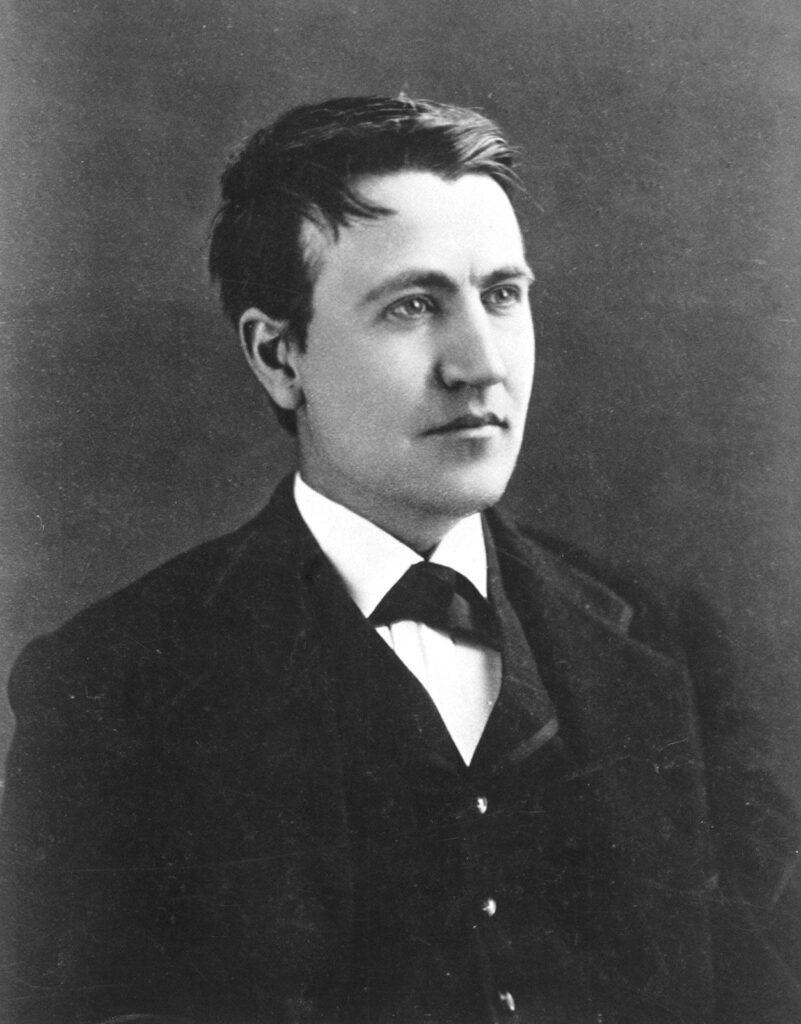
Young Edison, or “Al” as he was called, wasn’t considered special by his teachers. In fact, he only attended formal school for about 12 weeks. His mind wandered, he asked too many questions, and he was often labeled as “difficult” or “slow.”
But his mother saw something others didn’t. She pulled him out of school and taught him at home, feeding his love for reading, chemistry, and mechanical work. She believed in his potential when no one else did—and that belief sparked a fire Edison would carry forever.
Self-Taught and Unstoppable
With no formal education, Edison became a self-taught learner, devouring books on science and experimentation. He set up a tiny laboratory in his basement at age 10 and began conducting experiments, even causing minor explosions that filled the house with strange smells.
By age 12, Edison took a job selling newspapers and snacks on a train. Not content with just selling, he launched his own mini newspaper—The Grand Trunk Herald—printed right on the train. He also converted an empty baggage car into a mobile chemistry lab.
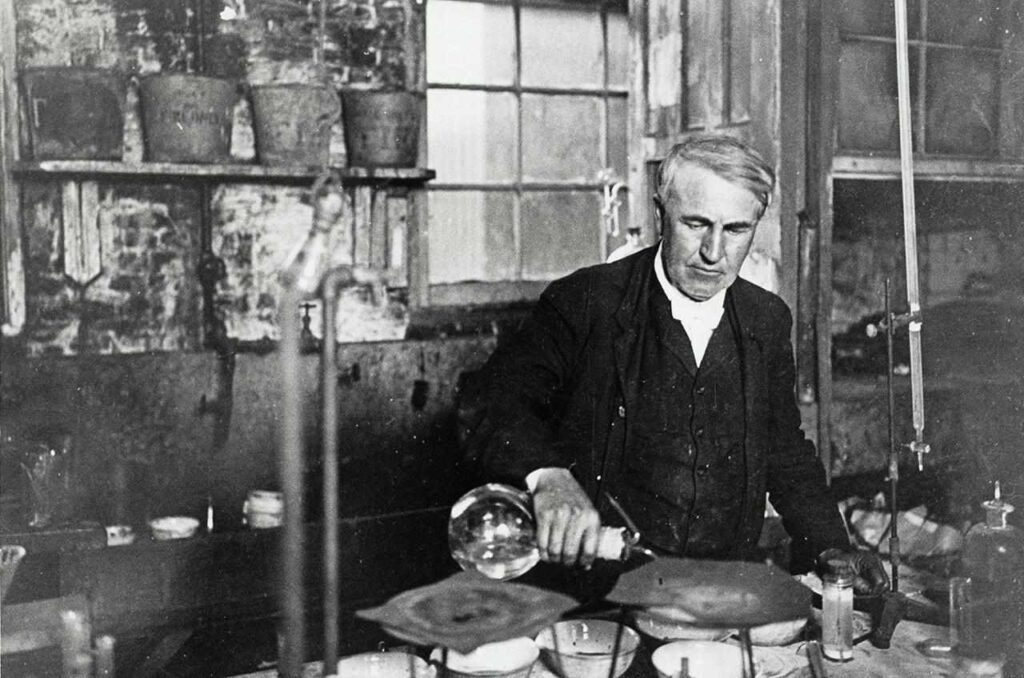
But one day, an experiment caused a fire. He was thrown off the train and lost part of his hearing—a disability that would stay with him for life. But Edison didn’t complain. He later said that partial deafness helped him focus without distraction.
First Taste of Invention
In his teens, Edison worked as a telegraph operator, a job that sparked his fascination with electrical signals. He studied how machines transmitted messages and soon began improving telegraph designs.
At age 22, he moved to New York City, almost broke. He slept in basements and lived off cheap food. But then—his first big break: he improved a stock ticker machine used in Wall Street trading, creating the Universal Stock Printer. He sold the rights for $40,000—a massive fortune in the 1870s.
Edison didn’t splurge. He used the money to set up his own invention factory: Menlo Park Laboratory in New Jersey, the first of its kind.
Menlo Park: Birthplace of Modern Invention
At Menlo Park, Edison built a team of inventors and launched what he called “invention on demand.” He treated it like a business, working 18-hour days and sleeping at the lab.
In 1877, he invented the phonograph, the world’s first sound recording and playback machine. People were astonished—it was like magic. It earned him the nickname: “The Wizard of Menlo Park.”
But Edison wasn’t done. He had a bigger goal.
💡 Lighting the World: The Invention of the Light Bulb
Though many others had experimented with electric lights, none had created a long-lasting, practical version. Edison took up the challenge.
In 1879, after over 1,000 failed attempts, he finally produced a light bulb with a carbon filament that could burn for hours. This wasn’t just an invention—it was a revolution.
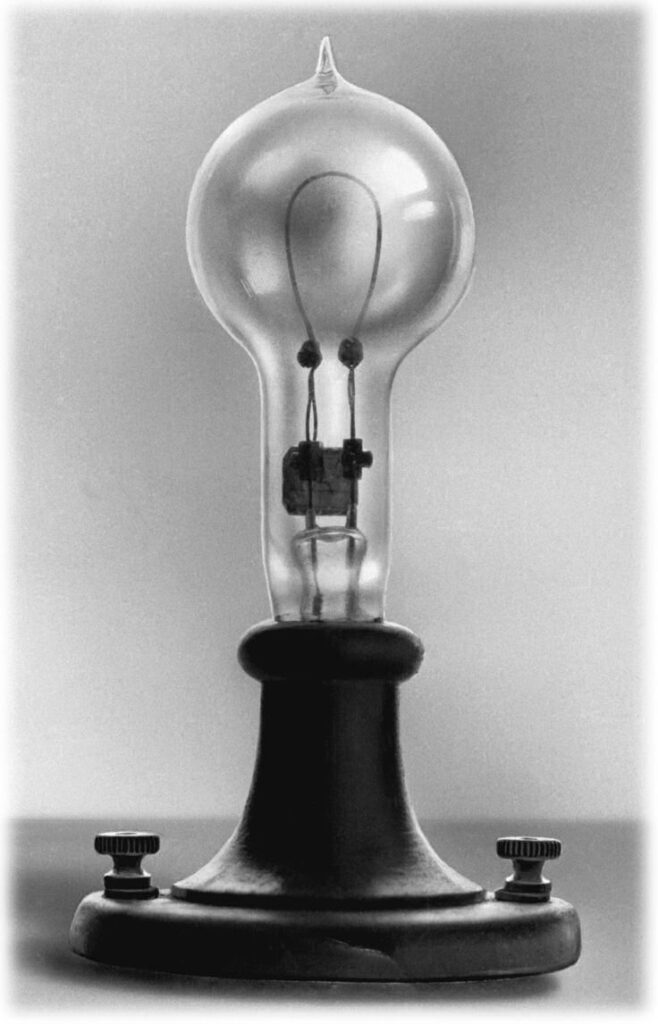
The light bulb changed the way the world lived, worked, and functioned. Edison soon built the first power station, lighting a portion of New York City. Civilization was never the same again.
From Inventor to Industrial Giant
Edison went on to found General Electric (GE)—one of the largest companies in the world today. Over his lifetime, he acquired 1,093 patents, more than any other individual in U.S. history.
Some of his other major contributions include:
- Motion pictures (kinetoscope)
- Electric generators and distribution systems
- Alkaline storage batteries
- Improvements in the telephone and telegraph
He turned science into business, becoming not just a brilliant inventor, but a savvy entrepreneur who commercialized his ideas for real-world use.
Personal Life and Character
Edison married Mary Stilwell in 1871. They had three children before Mary died young. He later married Mina Miller, with whom he had three more children.
Despite his growing wealth and fame, Edison remained restless, curious, and hardworking. He often said,
“Genius is 1% inspiration and 99% perspiration.”
He worked into old age, even as competitors like Tesla and Westinghouse rose in the electric world. Edison was not perfect—he had rivalries, made mistakes, and sometimes blocked others’ progress—but he never stopped dreaming.
Death and Legacy
Thomas Edison died on October 18, 1931, at the age of 84. To honor him, cities across America dimmed their lights for one full minute—a poetic tribute to the man who had lit the world.
Today, his inventions form the foundation of modern life. From the electricity that powers our homes to the recordings we play and the motion pictures we enjoy, Edison’s fingerprints are everywhere.
💡 Life Lessons from Thomas Edison
1. Never let school limit your learning
Formal education doesn’t define your brilliance. Edison was homeschooled and self-taught.
2. Failure is the price of progress
He failed over 1,000 times before inventing the light bulb. Each mistake taught him something new.
3. Turn obstacles into opportunity
He lost his hearing—but used it to focus deeper and eliminate distraction.
4. Stay curious, always
Even in his 80s, he was still tinkering and dreaming.
5. Believe in work ethic over talent
He didn’t call himself a genius. He called himself a grinder—someone who kept showing up.
✍️ Final Thoughts
Thomas Edison’s journey from a curious, misunderstood boy in rural Ohio to one of the greatest inventors in history is the very definition of a rags-to-riches story.
He didn’t just invent things. He created possibilities.
He didn’t just change industries. He lit up the world.
“Our greatest weakness lies in giving up. The most certain way to succeed is always to try just one more time.” – Thomas Edison
